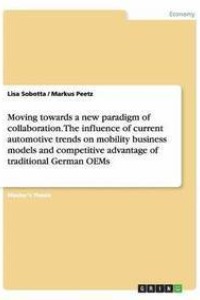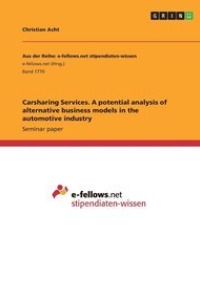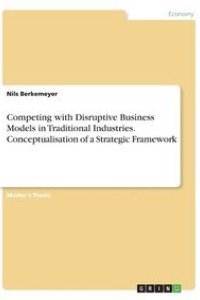
Liknande böcker
Moving towards a new paradigm of collaboration. The influence of current automotive trends on mobility business models and competitive advantage of traditional German OEMs
Bok av Lisa Sobotta
Master's Thesis from the year 2015 in the subject Business economics - Miscellaneous, grade: 1,3, University of Southern Denmark (University of Southern Denmark), language: English, abstract: This thesis analyzes and evaluates current macro-environmental trends in the German automotive industry and their evolutionary impact on automotive business models and competitiveness of traditional German car manufacturers.
To enhance the understanding of industry evolution and strategic change, the German automotive business is explored through the lens of market innovations. Drawing upon the industry evolution model of Henderson and Clark (1990), the impact of automotive market innovations on strategies of German OEMs with regard to inter-firm collaborations are classified and analyzed.
For evaluation of motives and strategic fit in cross-industry collaborations, sources and key success factors of inter-firm competitive advantages are elaborated. Synthesizing and refining among others the theories of Barney (2007), Dyer & Singh (1999), and Williamson (1993), new resources as derived from inter-organizational relationships are depicted in terms of competitiveness and their relations to German car manufacturers are discussed.
Identifying the red oceans and the blue oceans in the German automotive industry according to the business model theory of Kim and Mauborgne (2005), four scenarios for the strategic realignment of German OEMs in response to industry dynamics are formulated. Within this scope, modifications of business model elements are elaborated according to the strategy canvas of Osterwalder et al. (2005) and revisions of existing automotive business models are proposed.
Having studied the business model concept as a possible integrator of traditional strategic perspectives on industry evolution and firm performance, the thesis concludes with the insight that in order to capitalize on the emerging automotive trends, German OEMs need to intensify qualitative partner
Visa pris inkl. frakt Inkl. frakt







